Темы для обсуждения на уроках в 8-9 классах
Экзаменационные темы для 9 класса
Темы для обсуждения на уроках английского
Bridges can be different
(По материалам журнала "ИяШ"-2005г. Методическая мозаика №5-6)
... A man built a city, banks and cathedrals...
(The words from the U2 song)
Man built bridges - crossings of diverse natural obstacles - for walking on foot, for transport, for trade, for lovers watching the stars at night and much else besides. People have become so used to them that bridges are nothing unusual for us. Though at the same time a bridge is a genuine miracle... here are the top 11.
This bridge was situated in Babylon and built in the 7th century AD. Its length was about 700 metres and it was 9 metres in width. The Euphrates river flowed under it. This most ancient bridge led to the main temple.
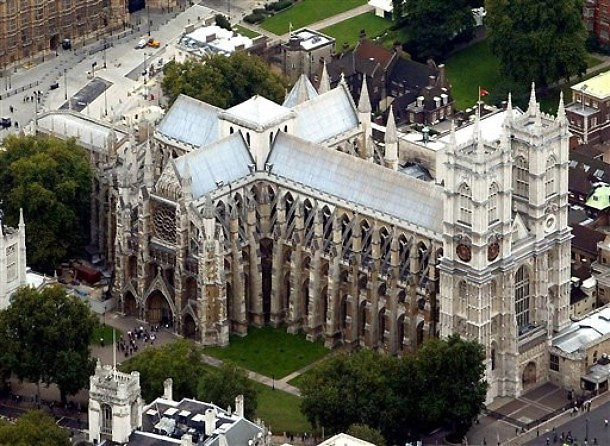
The trouble with this bridge was that not everyone could use it. More than 100 years ago the Italian acrobat Maria Spelterrini walked the tightrope across Niagara Falls.
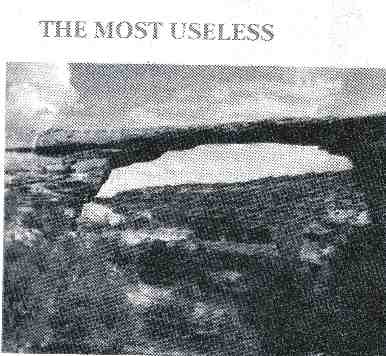
The bridge is in the West of the USA, in the stone desert of Utah state. It leads nowhere. This bridge is the length of a football ground. In fact the US Capitol could fit under its arch.
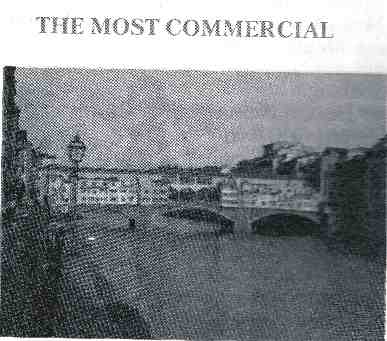
The Ponte Vecchio forms part of the Florence World Heritage site. Tins inhabited urban bridge is across the Arno river and has three great seg-mented arches on massive piers. It replaced a similar bridge that failed in 1333. The architect is Taddeo Gaddi,

The Spectacular Confederation Bridge links Cape Jourimain, New BrunswickandBorden- Carleton,
Prince Edward Island, the islands situ-ated in the Atlantic ocean not far from Canada. The technology of the 90s made; possible the construction of a bridge stretching almost 13 kilometres. It is presently the longest bridge in the world to cross ice-covered sail water.

This bridge was built in 2004 over the Tarne valley in France. The engi-neers brought the two central ends of the Millau road viaduct in southwest France together, completing the span of the highest bridge in the world. The road surface is 270 metres above the ground. The bridge, along the most direct route from Paris to the Mediterranean, was opened to public traffic on December 17. 2004, 39 months after work began.
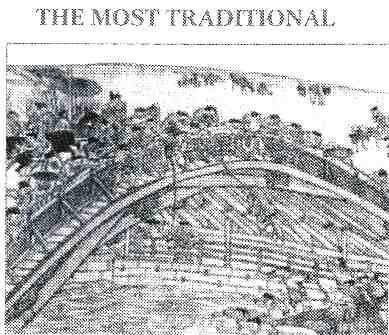
The "Rainbow Bridge" in Jinze, near Shanghai is so called because of its shape and colours. Until last year the Rainbow Bridge, the only arched bridge made of straight timbers, existed only in a painting from nine hundred years ago. Its length is 15 metres and its width is 3.6 metres. In mythology a rainbow is considered a road between the world of the gods and the world of the mortals.
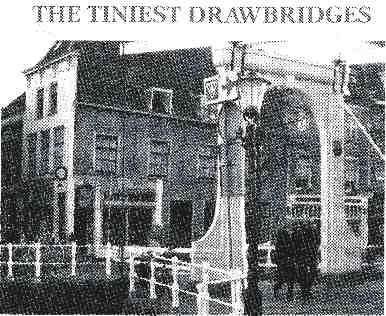
Such bridges arc mostly built in Denmark and Northern Holland. A drawbridge is a type of movable bridge typically associated with the entrance of a castle, but the term is also used to describe modern bascule bridges and lift bridges. The most common type of drawbridge consists of a wooden plat-form with one fixed side and the other side attached to a wall. It is raised by ropes or chains. Pulling on the chain raises the bridge.
The most unusual
This bridge is built between two tiny islands in the part of the St Laurence river where Canada borders the USA. The point is that this bridge is an inter-national one and the smallest in the world.

The bigger island belongs to Canada and the smaller one - to the USA.
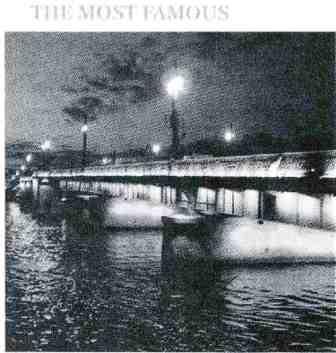
The Lieutenant Shmidt bridge in St .
Petersburg across the Neva was built in the 19 th century. It was named in honor of Lieutenant Shmidt, who was execut-ed for taking part in the revolt on board the ship "Ochakov". It is a raising bridge. The grating was designed by the architect A.P. Brullov, a famous artist"s brother. During these years the name was changed several times - Blagoveshchensky, Nikolaevsky

Nan Pu Bridge was built in 1991 in Shanghai. It has a navigational over-head clearance of 46 metres, accommo-dating any steamer with a tonnage of 55,000. With a full length of 846 metres and a width of 30, 35 metres, the bridge has six traffic lanes and two pedestrian lanes. Historically it is the first modern heavy-duty bridge in China, spiraling over the Huang Pu river like a gigantic dragon lifting its head.
Е . О . Грачева , студентка III курса МГПУ , Москва
copyright:©Ястребов В.И. 29.04.08г.-02.04.09-01.08.09г.-04.05.11

Одно из основных преимуществ данного учебного пособия - актуальность размещённых в нём тем и новизна содержания. Оно включает в себя 30 разговорных тем, затрагивающих проблемы современного мира и человека. Пособие предназначено для учащихся старших классов и колледжей, студентов ВУЗов и преподавателей. Оно позволяет эффективно сочетать изучение английского языка и подготовку к ЕГЭ. Данное пособие поможет тщательно подготовиться к уроку, зачёту, экзамену или олимпиаде, ознакомиться с интересными фактами, повысить уровень знаний. Оно пригодится и тем, кто изучает английский язык самостоятельно.
Примеры.
Answer the questions
1) How does a hobby influence a person"s life?
2) What kinds of hobbies do you know?
3) Why do people collect different things?
4) What is your attitude to extreme camping?
5) Why is ecotourism fashionable today?
6) What are the principles of eco-tourism?
7) Why is it important to everybody to have a hobby?
8) How do you spend your spare time?
What may the following nonverbal messages indicate?
A person
(1) nods his head; (2) pats another person on the shoulder; (3) shrugs his shoulders; (4) places his index finger to his lips; (5) keeps silence; (6) coughs slightly; (7) waves his hand; (8) stares fixedly at another person; (9) raises his voice; (10) stammers; (11) covers his face with his hands; (12) smiles a lot.
Answer the questions
1) What ways do we use to transmit information besides language?
2) Why do many researchers believe that nonverbal communication is more powerful than verbal communication?
3) What is the connection between nonverbal communication and a person"s culture?
4) How do people greet each other in different countries? How do they greet each other in your country?
5) What role do the high or low pitch of the tone and volume of the voice play in communication?
6) What can the "OK" gesture mean in different countries?
7) Why does physical appearance play a very important role in communication?
8) Why is it useful to develop good communicative techniques?
9) What should you do to avoid breaks in communication and personal relationships?
10) How can you facilitate communication?
Contents
A Hobby Makes Your Life Much More Interesting 5
Why Do We Dance? 9
Video and Computer Games 13
The Changing Face of Tourism: Ecotourism 18
The World"s Bizarre Festivals 23
The Mystery of Dreams 27
Artificial Intelligence 31
Mobile Phones: A Vital Part of Daily Life 36
What Do You Know about Names? 41
Stress and How to Cope Well With It 45
Stop It Before It Is Too Late 49
Generation Gap: Reality or a Psychological Prejudice 53
Price of Publicity 57
Friendship: A Single Soul Dwelling in Two Bodies 60
Love Is Life 64
Poverty and Richness Corrupt People"s Souls 69
Ways of Being Successful 73
Sorry Seems to Be the Hardest Word 78
Is It Worth Relying on Our Intuition? 81
Nostalgia 85
What Are Americans Like? 88
Is It Worth Lying? 93
Nonverbal Communication 98
Multiculturalism in the Modern World 102
My Home Is My Castle 106
What Skills Do You Need to Get a Good Job? 112
Colours and their Associations 116
Beauty Through Pain 121
Parenting: the Most Important Job on the Planet 126
Multiracial Families 131.
Самый частый вопрос, который потенциальные гости задают нам по телефону, звучит примерно так: «А что вообще такое ваш Клуб Разговорного Английского»? Рассказываем:) Мы встречаемся и говорим по-английски по 2 часа каждый день. А вот как выглядит типичная наша встреча.
Нас часто спрашивают: а как выглядят встречи Английского Разговорного Клуба? Вот, например, одна из наших встреч в Costa Coffee. Сидим, общаемся, пьем кофе, обсуждаем насущные проблемы по-английски. Нравится? Присоединяйтесь к нашим встречам!
Вы к нам в первый раз и не знаете, как найти столик Клуба Английского Языка в кафе? Очень просто: ищите столик, за которым говорят по-английски! Вот, например, одна из наших встреч в Costa Coffee. У нас всегда интересно, весело и мы говорим только по-английски. Нравится? Приходите!!!
Вам кажется, что начать говорить по-английски - это очень страшно? Так думают 90% гостей нашего Английского Разговорного Клуба, но… через 15 минут после начала встречи забывают о языковом барьере навсегда!!! Ведь у нас всегда самая дружелюбная атмосфера и лучшие модераторы, которые и помогут, и подскажут!!!
Друзья, на встрече Клуба Английского Языка помимо ведущего всегда есть человек, готовый позаботиться о вас - наш администратор. Администратор встречает вас в начале встречи, регистрирует гостей, заказывает напитки и вообще решает все вопросы. Вот, к примеру, Кристина (на фото справа) - одна из администраторов нашего Клуба.
Каждая встреча Разговорного Клуба Английского Языка длится 2 часа, и все это время мы говорим на определенную тему. Темы встреч публикуются заранее на главной странице сайта, чтобы вы, если захотите, могли подготовиться. Например, на этой встрече обсуждали тему Hypothetical Situations.
На каждой встрече Клуба Разговорного Английского мы в течение 2-х часов говорим на определенную тему. Вопросы у нас интересные, мнения у всех разные - скучно не бывает никогда!!!
Вы еще не знаете, что такое Клуб Разговорного Английского? Рассказываем:) На каждой встрече Клуба мы в течение 2-х часов общаемся на английском языке. Хотите попрактиковаться в английском? Присоединяйтесь!
Те, кто в собирается в наш Клуб Английского Языка в первый раз, всегда спрашивают, кто к нам ходит и легко ли вписаться в нашу компанию. Друзья, все наши гости - не только умные и интересные, но и очень дружелюбные люди!!! Посмотрите на фото, сами все поймете:)
Большинство наших гостей приходит в Разговорный Клуб Английского Языка, чтобы преодолеть языковой барьер. А когда он преодолен - они остаются с нами, чтобы практиковаться в английском и… просто общаться:)
Друзья,на встрече Клуба Английского Языка помимо ведущего всегда есть человек, готовый позаботиться о вас наш администратор. Администратор встречает вас в начале встречи, регистрирует гостей, и решает все вопросы. Вот, к примеру, Анастасия - администратор наших встреч по средам.
Если вам кажется, что кафе - слишком шумное место для Разговорного Английского Клуба - добро пожаловать на наши встречи в библиотеке им. Н.А. Добролюбова. Здесь всегда тихо и уютно, а в середине встречи мы делаем перерыв на чай с печеньками.
Друзья, вот так выглядят наши встречи в библиотеке. Большой овальный стол, все сидят, обсуждают вопросы по теме, ведущий поправляет участников, если есть необходимость. У нас всегда очень весело, уютно и культурно - в общем, та атмосфера, которая нужна, чтобы практиковать английский!
На каждой встрече Клуба Разговорного Английского Языка обязательно есть модератор, который вовлекает всех в разговор, поправляет мелкие ошибки и останавливает тех, кто говорит слишком много (увлечься очень легко!). Хотите попрактиковаться в английском? Присоединяйтесь!
Те, кто хочет прийти к нам в первый раз, часто спрашивают, кто к нам ходит. Отвечаем: наши гости очень разные люди по возрасту, профессиям и т.д. Но все они очень позитивные личности, потому как люди скучные иностранные языки не учат!
2 часа говорить на определенную тему, да еще и на английском, может быть тяжело. Поэтому в середине наших встреч в библиотеке мы делаем перерыв на 10 минут, чтобы попить чаю с печеньками.
The is the oldest city construction which could witness the legions of Romans and Saxons. Its founder is considered to be Wilhelm I (Duke of Normandy, William the Conqueror). Having conquered England he began erecting defenses and the Tower of London became the largest of them. The great construction was started to be built from the White Tower - the heart of all the structure. The White Tower represents a quadrangle 32 meters wide and 36 meters long. Its height is about 30 meters. The building was finished in 1100. In the times of Richard the Lionheart the Tower was extended by some more towers and walls. Under his rule it was also surrounded by the moat.

Westminster Abbey is rightfully considered to be one of the main sights of London. The history of Westminster began in 1065 when Edward the Confessor founded Benedectine Abbey at the place of the church which had existed there. had been acquiring its present appearance since the XIII century, in the times of Henry III, its construction was over only in the XVI century.

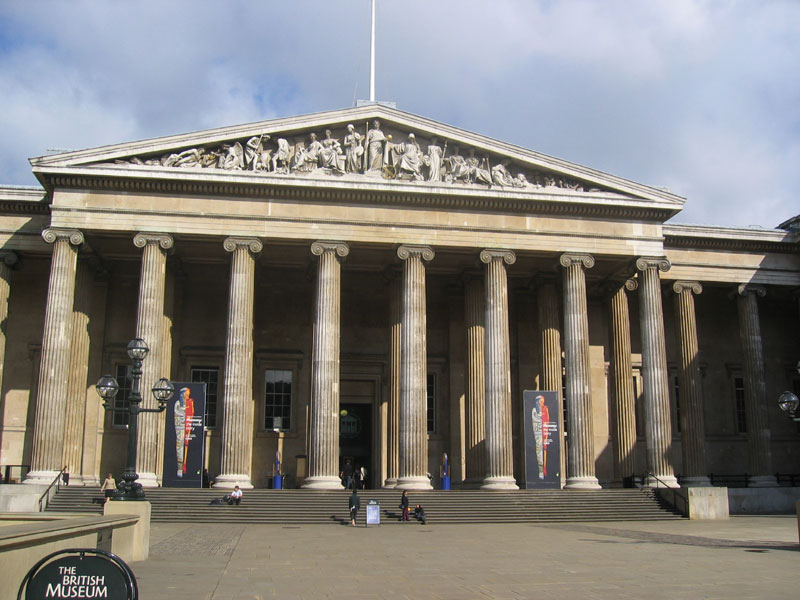 The British National Museum
is justly considered to be the pride of London. It is a unique treasury keeping the enormous experience of the civilization and having about seven million of exhibits. The history of the British Museum
dates back to far 1753. While the first visitor stepped under the museum vaults on the 15 th of September 1759. As it often happens, the museum owes its existence to the generosity of patrons. Only three persons managed to make such a foundation which allowed the museum to rise this high. The richest collections of Hans Sloane, the famous library of Robert Cotton, the unique manuscripts of Robert Harley – these all became first exhibits of the museum and foredoomed its further destiny, the destiny of the universal museum.
The British National Museum
is justly considered to be the pride of London. It is a unique treasury keeping the enormous experience of the civilization and having about seven million of exhibits. The history of the British Museum
dates back to far 1753. While the first visitor stepped under the museum vaults on the 15 th of September 1759. As it often happens, the museum owes its existence to the generosity of patrons. Only three persons managed to make such a foundation which allowed the museum to rise this high. The richest collections of Hans Sloane, the famous library of Robert Cotton, the unique manuscripts of Robert Harley – these all became first exhibits of the museum and foredoomed its further destiny, the destiny of the universal museum.

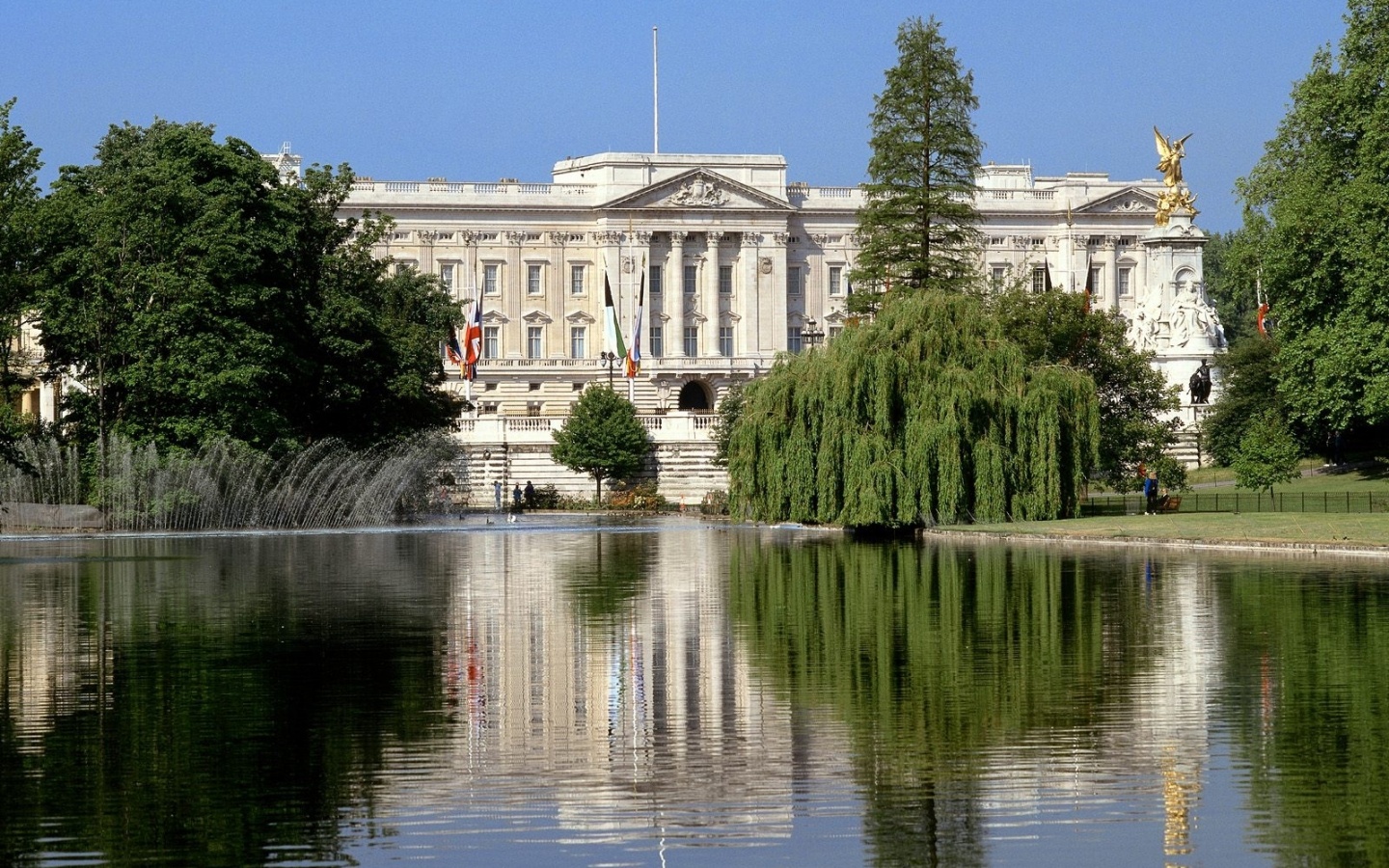 Buckingham Palace is one of the pearls of the England’s heritage, many other London’s sights simply pale beside its magnificence. Today it is an official residence of the Royal family of England.
Buckingham Palace is one of the pearls of the England’s heritage, many other London’s sights simply pale beside its magnificence. Today it is an official residence of the Royal family of England.
Dates many centuries back. It was initially built in the beginning of the eighteenth century for the Duke of Buckingham and was deemed to be one of the most splendid palaces all over London. In 1762 it received the title “Queen’s House” right after its purchase by King George III for his spouse – Queen Charlotte from the then owner – sir Charles Sheffield.

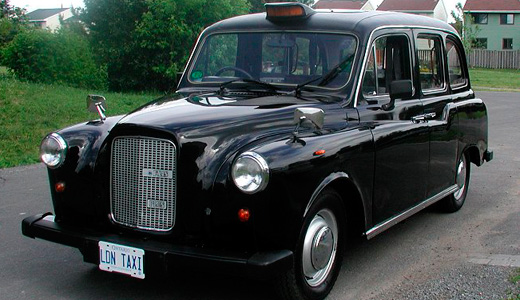 The world-known London taxi black cab has its own history, culture and traditions. Black cab
is one of the symbols of London in addition to red double-deck buses, telephone booths and Big Ben. The history of the English taxi started in 1639 when coachmen united to create their own licensed Corporation. Initially they used four-wheeled carriages, but already in the 1850s there appeared more manoeuvring open two-wheeled carts on the streets of London – they were called cabriolets (here is where the word “cab” originates from).
The world-known London taxi black cab has its own history, culture and traditions. Black cab
is one of the symbols of London in addition to red double-deck buses, telephone booths and Big Ben. The history of the English taxi started in 1639 when coachmen united to create their own licensed Corporation. Initially they used four-wheeled carriages, but already in the 1850s there appeared more manoeuvring open two-wheeled carts on the streets of London – they were called cabriolets (here is where the word “cab” originates from).

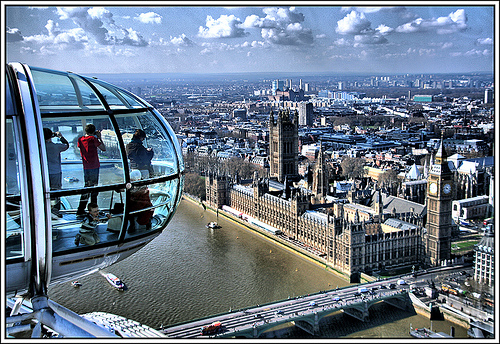 Londoners marked the beginning of the new millennium by the construction of the largest European Ferris wheel on the Thames embankment. The new tourist attraction of London
was called “the London Eye”. The structure is 135 meters high which is equal to the height of a 45-storey skyscraper. The creators of this magnificent project are architects Julia Barfield and David Marks. The London Eye sooner resembles a wheel of a giant bicycle but its name is probably explained by the fact that the citizens of the English capital and guests of the city can observe London panoramas from the bird’s eye view. Hardly had it been built when it already became one of the main places of interest in London. Today it has even more visitors than the Taj Mahal and the Pyramids of Egypt do.
Londoners marked the beginning of the new millennium by the construction of the largest European Ferris wheel on the Thames embankment. The new tourist attraction of London
was called “the London Eye”. The structure is 135 meters high which is equal to the height of a 45-storey skyscraper. The creators of this magnificent project are architects Julia Barfield and David Marks. The London Eye sooner resembles a wheel of a giant bicycle but its name is probably explained by the fact that the citizens of the English capital and guests of the city can observe London panoramas from the bird’s eye view. Hardly had it been built when it already became one of the main places of interest in London. Today it has even more visitors than the Taj Mahal and the Pyramids of Egypt do.

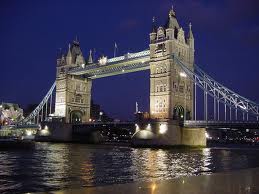 One of the most popular among tourists and most visited English sights is Tower Bridge in London
. Even if you have never seen it before – you’ll immediately recognize this place. It appeared following the decision of the London Parliament that passed the bill on a bridge construction over the Thames in 1872: the city needed one more bridge to harmonize with the architecture of the Tower of London. So an architect Horace Jones worked out a design of a draw bridge in Gothic style.
One of the most popular among tourists and most visited English sights is Tower Bridge in London
. Even if you have never seen it before – you’ll immediately recognize this place. It appeared following the decision of the London Parliament that passed the bill on a bridge construction over the Thames in 1872: the city needed one more bridge to harmonize with the architecture of the Tower of London. So an architect Horace Jones worked out a design of a draw bridge in Gothic style.
It has two towers interconnected by few passages for tourists at the height of 42 meters over the water and 34 meters over the highway. The symbol of London also has bascules weighing 1200 tons each, they can open to form an angle of 86 degrees and to let heavy ships with carrying capacity of about 10000 tons sail beneath.


People worldwide celebrate in February, 14 th . This is when they try to congratulate the beloved ones and show their affection to them in various ways. Traditionally people give small presents to each other on St. Valentine’s Day – flowers, chocolate sweets, plush toys and valentines, of course – special cards, usually heart-shaped, with tender words of love expressed in verse sometimes. Some romantic couples, who love this holiday passionately, celebrate by declaration of love and engagement. They believe it can bring them happiness.
Определяем цель взаимодействия
Let’s discuss pro and contra – Давайте обсудим «за» и «против»
Let"s clear it up. It’s the matter of great importance. - Давай разберёмся. Это дело большой важности
Вступаем в дискуссию, озвучиваем тему своего высказывания
I am not much of a public speaker but I"d like to add... – Я не очень хороший оратор, но мне хочется добавить (вступаем в дискуссию)
What I want to speak about is… То, о чем я хочу поговорить сейчас - это…
Let me inform you about… – Позвольте мне сообщить вам…
And now about… – А теперь о…
As for… - Что касается…
My speech will be about … – Речь пойдет о…
I will tell you about... – Я расскажу Вам о…
Самостоятельно оцениваем информацию, которой делимся с окружающими
At first – Во-первых
First of all – Прежде всего
Аs far as I remember/know… – Насколько я помню/знаю…
If I"m not mistaken… – Если я не ошибаюсь…
If I remember rightly… – Если я правильно помню…
It’s needless to say…– Нет нужды говорить…
It"s common knowledge that... – Это общеизвестно, что…
It’s well known that… – Хорошо известно, что…
Everybody knows… – Все знают, что…
No one is surprised to hear that… – Никто не удивится, услышав, что…
It’s important, I think. – Я думаю, это важно.
It’s also very interesting that – Также очень интересно…
Frankly speaking – Честно говоря
Strictly speaking – Строго говоря
To say the truth – По правде сказать
In fact – На самом деле
There is no doubt that… – Нет сомнений в том, что…
Озвучиваем ход мысли
Now, where was I? – Итак, о чем я говорил?…
Where were we? – На чем мы остановились?
Getting back to the topic – Возвращаясь к теме
What are you driving at? – К чему ты клонишь?
I just say things that come into my head. – Я просто говорю то, что приходит на ум.
Дополняем высказывание
In addition… – В дополнение…
I would like to add that – Я бы хотел добавить, что…
By the way – кстати, между прочим
Just for the record – для справки
Заполняем паузы, выигрываем время
Let me think… – Дайте подумать…
Wait a moment / just a moment /minute… – Секундочку….
How could it slip my mind? – Как это могло выскочить у меня из головы?
Oh, it’s a pity, I don’t remember his name – Жаль, но я не помню его имени…
I’m trying to collect my thoughts. – Пытаюсь собраться с мыслями.
Сомневаемся в понимании услышанного, переспрашиваем, уточняем
What do you mean? – Что Вы имеете в виду?
What does it mean? – Что это значит?
…. What is it? - … (слово, которое не поняли) Что это?
What do you want to say? – Что Вы хотите сказать?
Could you say it again? – Скажите, пожалуйста, еще раз.
Could you repeat, please? – Не могли бы вы повторить, пожалуйста.
Excuse me, I don’t understand. Could you speak not so quickly? – Простите, я не понимаю. Не могли бы вы говорить не так быстро?
I don’t quite follow you. – Я не совсем улавливаю мысль.
I’m not sure I get what you mean.- Я не уверен, что понял, что Вы имели в виду.
What did you say? – Что вы сказали?
In other words… – Другими словами…
Paraphrasing we can say… – Иными словами можно сказать…
Подтверждаем понимание
I see… – Я вижу (понимаю)…
I understand… – Понимаю…
And? ..И?
I got it. – Понял.
Реагируем на полученную информацию
Really? – Правда?
Are you surе? – Вы уверены?
I was surprised. – Я удивлен.
That"s awful! – Это ужасно!
Shame on you! – Как не стыдно!
It doesn’t matter for me. – Это не имеет значения для меня.
It’s a pity. –Жаль.
It is a thousand pities. – Очень жаль.
It could be better. – Могло бы быть лучше.
It could have been worse! – Могло быть и хуже.
Dear me! – Вот это да! (удивление)
O my God! – Боже мой! (удивление)
Things happen. – Всякое бывает.
It’s terrible! – Это ужасно!
It"s boring! – Это скучно!
I didn"t like it at all. – Мне это не нравится вообще.
It is great! I like it. – Здорово! Мне нравится.
It’s really interesting. – Это действительно интересно.
I can’t say it"s great. – Не могу сказать, что это здорово.
Not bad. – Неплохо.
I dislike it. – Мне не нравится.
Задаем вопрос
May I ask you… – Можно у вас спросить…
I wonder… – Интересно…
I would like to know… – Мне хотелось бы знать…
Tell me please… – Скажите мне, пожалуйста…
My question is… – У меня такой вопрос
I wish I knew… – Хотел бы я знать…
Реагируем на вопрос
I really don’t know. – Я действительно не знаю.
It’s an interesting question, thanks a lot. – Это интересный вопрос, спасибо.
Выражаем собственное мнение
In my opinion – По моему мнению
I think – Я думаю
To my mind – По-моему
From my point of view – С моей точки зрения
I believе… – Я считаю…
I suppose – Я полагаю/предполагаю
Аs for me… – Что касается меняэээ
I’m sure – Я уверен…
Probably – Возможно, вероятно
Something tells me – Что-то мне подсказывает…
It was just my point of view. – Это только моя точка зрения.
I found out that… – И я выяснил, что…
I just wanted to show you… – Я просто хотел показать Вам, что…
That"s my opinion! And I don’t eat my words. – Это мое мнение, и я не беру своих слов обратно.
Поддерживаем внимание собеседника, расставляем логические акценты
Believe it or not… – Веришь или нет…
Look here… – Послушай…
You know… – Вы знаете…
Please, pay attention to the fact that…– Пожалуйста, обратить внимание на тот факт, что…
As you may know… – Как вы, наверно, знаете…
You see… – Как Вы видите…
Вежливо прерываем собеседника
Excuse me… – Простите…
Pardon me… – Простите…
Sorry to interrupt… – Простите, что прерываю…
May I interrupt (for a minute)? – Можно прервать Вас (на секундочку)?
Can I add something here? – Можно я добавлю здесь….
Выражаем несогласие с аргументами собеседника и приводим встречные аргументы
I’m afraid you aren’t quite right… – Боюсь Вы не совсем правы…
I don’t understand you… – Я не понимаю Вас…
I should not say so… – Я бы так не сказал…
I doubt it… – Сомневаюсь…
It’s an interesting idea but… – Интересная идея, но…
Yes, but . . . – Да, но…
Yes, you are right, but… – Да, Вы правы, но…
You may be right, but... – Возможно Вы правы, но…
I may be wrong, but... – Возможно я не прав, но...
Not bad. I just want to pay your attention… – Неплохо. Но я просто хочу обратить Ваше внимание….
But don’t forget about… – Но не забывайте о…
It’s true but… – Это правда, но…
It might be so, but… – Может быть и так, но…
Far from it… – Совсем не так…
Nothing of the kind. – Ничего похожего.
Nothing like that. – Ничего подобного.
I can’t say I agree. – Не могу сказать, что я согласен.
I just want you to understand that… – Я только хочу, чтоб Вы поняли, что…
Most unlikelу. – Непохоже, что это так.
I don"t think so. – Я так не думаю.
I wish I could agree, but I really can"t. – Был бы рад согласиться, но не могу.
Тo offence, but… – Без обид, но…
It’s clear, but… – Понятно, но…
It doesn"t prove your idea. – Это не доказывает Вашу мысль.
You had better think about… – Вы бы лучше подумали о…
Оn the contrary – Наоборот
In spite of this… – Несмотря на это…
I hope you’ll change your mind. – Надеюсь, Вы измените свое мнение.
Generally I like your idea, but… – В целом мне нравится Ваша идея, но…
It"s a lie. – Это ложь.
It seems me to be false. – Это представляется мне невернымэ
I understand your position but… – Мне понятна Ваша позиция, но…
What are you talking about? – О чём ты говоришь?
But we must take into account… – Но нам следует принимать во внимание…
But we must take into consideration… – Но нам следует учитывать…
But it is to be noted… – Но необходимо заметить…
Deep down I disagree. – В глубине души я не согласен.
But, please, don’t let out of your sight the fact … – Но, пожалуйста, не упускайте из вида тот факт…
But I dare say – Но я осмелюсь сказать…
Соглашаемся с собеседником
Exactly! –Точно! Именно!
Naturally! - Естественно!
Quite so. – Именно так.
That"s right. – Правильно.
I agree with you. – Я согласен.
You read my mind. – Ты читаешь мои мысли.
I dare not protest. – Не смею возражать.
Hmmm… I hadn’t thought of that before. – Ммм…Не думал об этом раньше.
It"s new to me. – Это новая информация для меня.
Предлагаем собеседнику
Let’s – Давай…
Why don’t we (+ глагол в начальной форме)… – почему бы нам не (+ глагол в начальной форме)…
May be we will – Может быть
We could… if you like it… –Мы могли бы … если ты хочешь…
If you don’t mind, let’s… – Если Вы не против, давайте…
And what about (+Ving) – А как насчет...?
May be … What do you think of it? – Может быть… Что ты думаешь об этом?
If I were you I would … – На твоем месте я бы…
What if… – Что, если…
What do you think about . . – Что ты думаешь насчет…?
Реагируем на предложение
It"s worth trying/discussing… – Стоит попробовать/обсудить…
That’s interesting. – Это интересно.
Great idea! – Отличная идея!
I have nothing against! – Ничего не имею простив.
Why not? – Почему бы нет?
It’s fantastic! – Фантастика!
That’s great! – Отлично!
OK. – Хорошо.
Of course. – Конечно (разумеется, это и так все знают).
Certainly. – Конечно.
With great pleasure. – С удовольствием.
As you want. – Как хочешь.
It"s all the same to me. – Мне без разницы.
What for? – Зачем?
Заканчиваем дискуссию, подводим итоги
Рeople say tastes differ. – Говорят, что о вкусах не спорят.
It’s matter of opinion. – Это спорный вопрос.
All in all.. – В конечном счёте, с учётом всех обстоятельств…
Wait and see. – Поживём увидим.
Let"s drop the subject. – Давай оставим эту тему.
I don’t want to discuss this problem. – Я не хочу обсуждать эту проблему.
In any case it was nice to speak to you. – В любом случае было приятно поговорить с Вами.
Use your own judgement. – Решай сам.
To sum up… – Подводя итог, суммируя все вышесказанное…
In short / in brief / in a word – Короче ….
In general… – В общем…
In conclusion I would like to say… – В заключение я хотел бы сказать…
After all… – В конце концов, в итоге….
So the main idea is that... – Итак, основная идея заключается в том, что…

Как привлечь в дом удачу и деньги: три эффективных ритуала
Урок русского языка "мягкий знак после шипящих у существительных" Урок игра ь знак после шипящих
Салат с курицей и шампиньонами слоеный - быстро и вкусно
Сонник: к чему снится лестница
К чему снится рыба женщине